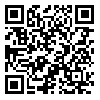
International Journal of Industrial Engineering & Production Research
Iran University of Science & Technology
BibTeX | RIS | EndNote | Medlars | ProCite | Reference Manager | RefWorks
Send citation to:
URL: http://ijiepr.iust.ac.ir/article-1-127-en.html
It is the purpose of this paper to introduce a computer software that is developed for the analysis of general multi degree of freedom rotor bearing systems with non-linear support elements. A numerical-analytical method for the prediction of steady state periodic response of large order nonlinear rotor dynamic systems is addressed which is based on the harmonic balance technique. By utilizing harmonic balance with appropriate condensation, it is possible to considerably reduce the number of simultaneous nonlinear equations inherent to this approach. Using this method, the set of nonlinear differential equations governing the motion of the rotor systems is transformed to a set of nonlinear algebraic equations. A condensation technique is also used to reduce the nonlinear algebraic equations to those only related to the physical coordinates associated with nonlinear components. The stability (linear) of the equilibrium solutions may be conveniently evaluated using Floquet theory, particularly if the damper force components are evaluated in fixed, rather than rotating, reference frames. The versatility of this technique is illustrated on systems of increasing complexity with and without damper centralizing springs.
Received: 2010/07/19 | Published: 2008/07/15
| Rights and permissions | |
 | This work is licensed under a Creative Commons Attribution-NonCommercial 4.0 International License. |



